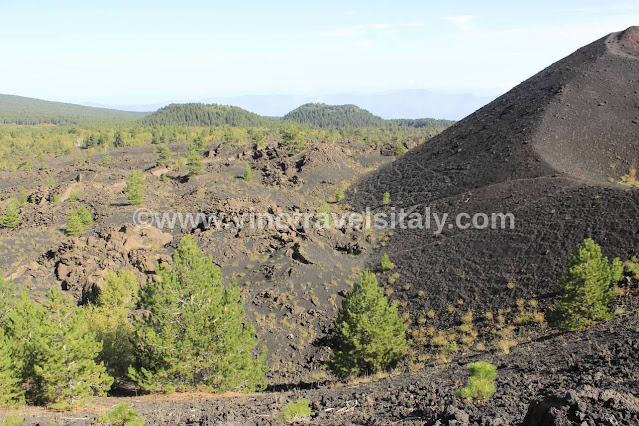I’m always intrigued by volcanic wines no matter where they are grown. There is something so unique about wines growing on either ancient volcanic soil or even active volcanos like Mt. Etna where the soil composition is ever changing. I was reminded of how fascinating the wines of Mt. Etna in Sicily are once again when I attended a live webinar this week hosted by the Napa Wine School with Ben Spencer sharing his expertise on what makes these wines so special. You may remember I featured Ben Spencer and his book “The New Wines of Mount Etna” in the past that you can revisit below. Today I wanted to highlight even more that I learned about the wines of Mt. Etna and some interesting facts.
Sicily is the 4th largest region in terms of quantity of wine production in Italy. It’s the largest island in Italy with a Mediterranean climate hosting warm and dry summers following by mild and wet winters. Mt. Etna is located on the northeast side of the island and is a 900-foot volcano with the Ionian Sea off the east coast. This area receives a few different mistral winds that sweep across the sea that influence winemaking on Etna. There is the ponente winds that provide humid, by dry air coming from the west. Coming in off the Ionian Sea is the grecale winds that are more cooling. From the south reaching up from Africa are the scirocco winds that are sandy that bring in humidity that can leave behind dust that can affect the leaves on the vines, therefore also affecting photosynthesis.
Mt. Etna not only faces the challenges of climate including the winds, but this region also receives up to 75 inches of rain, which can potentially also bring fungus, mold and rot. As one can imagine the steep slopes where the vineyards are planted so the tedious labor of manual harvest is required as well. Irrigation is not allowed so the vines must search deep below the surface.
The soils of Mt. Etna are composed of 35 different soils including basalt, sand, pumice, glass, metal, etc. With Etna being an active volcano, these soils do change throughout the years as Etna releases what they call as parent material that comes from the magna chamber deep below the surface. This parent material can deposit up to 1,000 pounds per year on the surface of what already exists. This is part of the reason why these wines are ever changing even including the flora that varies year to year with a variety of different plants from the ever-changing soils.
Wrapping up our webinar Ben shared what may be possible for the future of Mt. Etna wines. Currently the region is only farming about 2,700 acres with a production of 4 million bottles, but there are almost 57,000 acres available to be utilized within the DOC. He also mentioned that possibly within the next 10 years you may see an Etna DOCG. This will be an interesting wine region to watch develop in the coming years. Italy has such rich history, but also so much to go when it comes to Italian wine.
Of course, learning isn’t complete without being able to taste some wines. Although I didn’t get the wines that they were sampling in the tasting I did open a bottle I had on hand, a 2018 Firriato Le Sabbie Dell’Etna Etna Rosso DOC. I was making some baked ziti for the family and figured this would be an enjoyable pairing. This wine is made from 80% Nerello Mascalese and 20% Nerello Cappuccio. Nerello Mascalese is the primary red grape of the Etna Rosso DOC wines. It is an offspring of Sangiovese and a white grape of Calabria, Mantonico Bianco. Up to 20% Nerello Cappuccio is allowed in the Etna Rosso DOC wines as used in this blend. Red wines also make up 55% of the Etna DOC wine production.
The 2018 Firriato Le Sabbie Dell’Etna Etna Rosso DOC was lighter ruby color with brick tinges in the glass with a rich bouquet of red fruit aromas that remind me of cherry chapstick with notes of black pepper and cinnamon. Juicy red berries continue onto the palate with lively acidity. Elegant tannins carry through to a harmonious finish. SRP $20-25 ABV 13.5%
To check out my other articles on Mt. Etna wines including my visit to the Firriato estate in Sicily follow along:



No comments:
Post a Comment